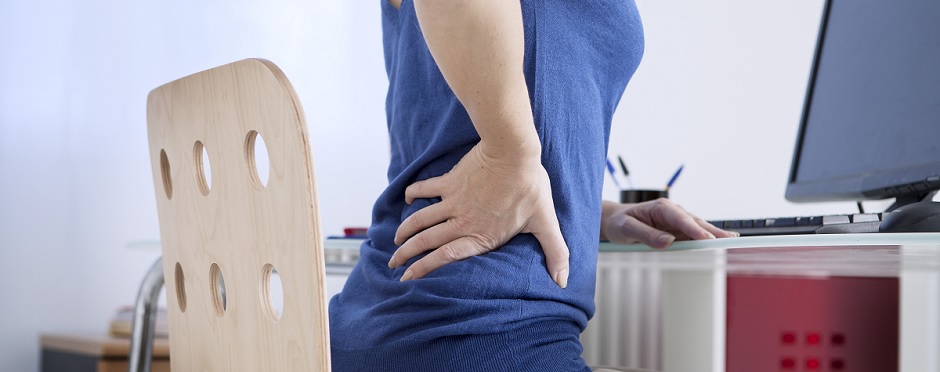
Why Does It Hurt When I Sit?
Leave a CommentIn the past year many of us have been juggling the challenges of working from home. With this comes changes in work setups, changes in hours worked, and the blurring of work and home spaces. The combination of these changes may be contributing to aches and pain in various body parts. If you continue to work remote or are transitioning back to office life, here are some helpful tips.
Balancing Work-Life Boundaries
The barriers between work and home have become increasingly blurred in the past year especially as many companies offer remote working opportunities. With this change, much of the workforce has increased the number of hours worked each day, and many are working more consecutive hours without breaks. Those water cooler and bathroom breaks or small trips to co-workers desks may have played a bigger role than you realized. Prolonged positions can cause pain over time. These extended times in positions can cause muscle fatigue, muscle tension, swelling, or joint pain.
Take Time to Move
Many patients who have been working from home have reported increased pain in various areas including neck, headaches, shoulders, elbows, low back, hips, glutes, hamstrings and knees. Research shows that trigger points, those pesky knots everyone can relate to, can set in in about an hour’s time.1 So frequent stretching or movement breaks can be helpful in managing the symptoms often associated. Setting a timer on your phone to get up and move every hour can be a good way to help you build those short breaks into your day, at home or if you are back in your office. With increased use of camera facing meetings and classes, it may seem difficult to sneak in movement breaks, but even just standing up for a short time can provide some relief. And if you feel a little silly taking these breaks, encourage your colleagues to join! Your eyes and joints will thank you.
Pay Attention to Your Ergonomics
Whether you’re back in the office or still working from home, you’ll need a solid set up at your desk to support your body’s posture. While many have had to make the best of what they have, there are some relatively simple changes that can help support you and your work.
- Having your work screen at eye level is best to keep from prolonged neck flexion (looking down).
- Having your keyboard set up in a position so that your forearms are supported can help prevent wrist pain.
- If you are working from a laptop, it may be beneficial to invest in a separate keyboard to allow for better positioning.
- The height of your chair also plays an important role. You want your seat to be high enough that your hips are in line, or slightly higher than your knees and your feet can comfortably sit flat on the floor.
- Having good lumbar support can help prevent tipping or slouching in the low back and pelvis, which often leads to low back and hamstring tightness. Rolling up a bath towel and placing it at the small of your back is a quick and easy way to provide this support.
Tips to Help with Pain
Even with a solid work set up, there are techniques you can use to help manage tightness or pain.
- Take short breaks to move about every hour.
- Gentle head circles can provide tight neck muscles with some reprieve.
- While sitting up tall or standing, gently squeeze your shoulder blades back and down towards each other. Pretend like your trying squeeze back toward the opposite back pocket, if you haven’t yet totally adopted the athleisure attire.
- Place your hands on your low back, squeeze your glutes, and slowly arch backwards. You may feel some pressure in your low back or even a stretch in the front of your hips.
- Either sitting or standing, gently rotate your trunk to either side. If you have armrests, you may use those for some light overpressure into the stretch. Breathe deeply into the stretch for 2-3 breaths and repeat on the other side.
Should you experience pain when working from home or if you have pain upon returning to an office-setting, reach out to an Athletico near you for a Free Assessment. Our experts can help you manage muscle fatigue, tightness, and pain throughout your work day. Free assessments are available in-clinic and virtually through our Telehealth platform.
The Athletico blog is an educational resource written by Athletico employees. Athletico bloggers are licensed professionals who abide by the code of ethics outlined by their respective professional associations. The content published in blog posts represents the opinion of the individual author based on their expertise and experience. The content provided in this blog is for informational purposes only, does not constitute medical advice and should not be relied on for making personal health decisions.
References:
1. Hoyle JA, Marras WS, Sheedy JE, Hart DE. Effects of postural and visual stressors on my-ofascial trigger point development and motor unit rotation during computer work. J Electromyogr Kinesiol. 2011 Feb;21(1):41-8. doi: 10.1016/j.jelekin.2010.04.006. Epub 2010 Jun 26. PMID: 20580571.
